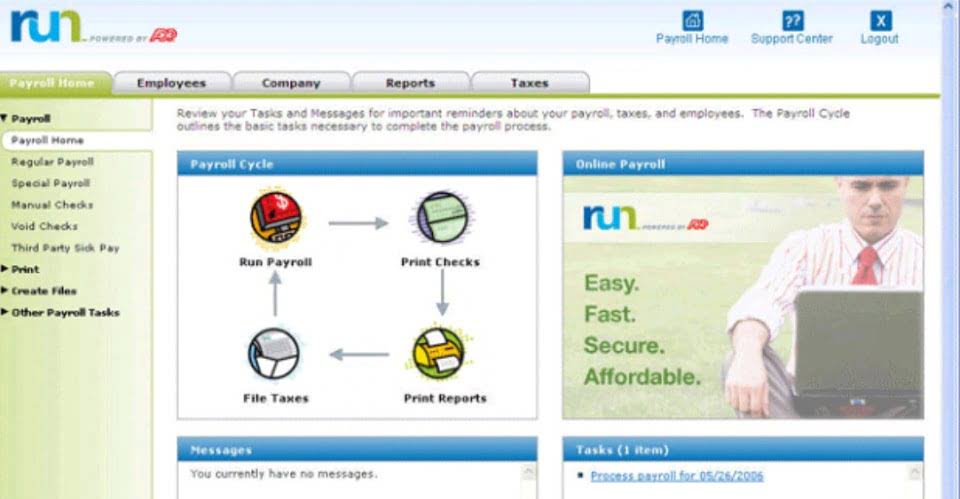
Not only is net income often higher under FIFO, but inventory is often larger as well. With this remaining inventory of 140 units, the company sells an additional 50 items. The cost of goods sold for 40 of the items is lifo fifo calculator $10, and the entire first order of 100 units has been fully sold. The other 10 units that are sold have a cost of $15 each, and the remaining 90 units in inventory are valued at $15 each, or the most recent price paid.
- This, however, is not always possible; it may be far too time – and labor – consuming, or you might be too busy shipping products at the end of the month to perform an actual count.
- Under the FIFO method, the COGS for each of the 60 items is $10/unit because the first goods purchased are the first goods sold.
- If you’re running a business or managing a company’s finances, you’ve probably come across the terms FIFO and LIFO.
- Inventory valuation is an accounting practice in which a business values the unsold inventory stock (which are classified as assets) they have at the point they prepare their financial statements.
Help Me Choose

This is the opposite of the FIFO method and can result in old inventory staying in a warehouse indefinitely. As you may have noticed above, with the FIFO method, the ending inventory value will mainly depend on the price change of the units bought over time. Please note how increasing/decreasing inventory prices through time can affect the inventory value. How you evaluate your inventory can impact how much your business is taxed.
How do I calculate COGS using LIFO?
- Inventory may be calculated physically (typically once a month) or perpetually (tracking stock in real-time).
- Notice how the cost of goods sold could increase if the last prices of the items the company bought also increase.
- WAC is calculated by dividing the COGS by the inventory units available.
- Stock accounting involves calculating stock in accounting terms, whereas stock management is about the tracking and control of the movement of stock.
- Kristen Slavin is a CPA with 16 years of experience, specializing in accounting, bookkeeping, and tax services for small businesses.
- FIFO is the easiest method to use, regardless of industry, and this inventory valuation method complies with GAAP and IFRS.
While the weighted average method is a generally accepted accounting principle, this system doesn’t have the sophistication needed to track FIFO and LIFO inventories. The average inventory method usually lands between the LIFO and FIFO method. For example, if LIFO results the lowest net income and the FIFO results in the highest net income, the average inventory method will usually end up between the two. Suppose the number of units from the most recent purchase been lower, say 20 units.

Difference Between FIFO and LIFO
For investors, inventory can be one of the most important items to analyze because it can provide insight into what’s happening with a company’s core business. So, which inventory figure a company starts with when valuing its inventory really does matter. And companies are required by law to state which accounting method they used in their published financials. However, please note that if prices are decreasing, the opposite scenarios outlined above play out. In addition, many companies will state that they use the “lower of cost or market” when valuing inventory.
FIFO: Periodic Vs. Perpetual
Let’s take the example of Kendo Electronics, they have been operating for a year now and these are the inventory costs. Entering this data successfully will allow you to figure out the FIFO and LIFO values. LIFO, or Last In, First Out, assumes that a business sells its newest inventory first.
Understanding FIFO and LIFO Methods
- This means taxable net income is lower under the LIFO method and the resulting tax liability is lower under the LIFO method.
- The FIFO and LIFO methods impact your inventory costs, profit, and your tax liability.
- This gives businesses a better representation of the costs of goods sold.
- Our partners cannot pay us to guarantee favorable reviews of their products or services.
- Conversely, COGS would be lower under LIFO – i.e. the cheaper inventory costs were recognized – leading to higher net income.
- For example, those companies that sell goods that frequently increase in price might use LIFO to achieve a reduction in taxes owed.
In this article, we’ll explain what FIFO and LIFO are, why they matter, and how to calculate them using our easy-to-use FIFO & LIFO Calculator. The LIFO Reserve should be calculated at least annually, typically as part of the year-end financial reporting process. It’s also useful to update calculations if there are significant changes in inventory or accounting methods.
- Using FIFO and LIFO calculators simplifies this process by automating calculations based on your chosen inventory valuation method.
- Since the seafood company would never leave older inventory in stock to spoil, FIFO accurately reflects the company’s process of using the oldest inventory first in selling their goods.
- A company’s taxable income, net income, and balance sheet balances will all vary based on the inventory method selected.
- The remaining two guitars acquired in February and March are assumed to be unsold.
- LIFO generates lower profits in early periods and more profit in later months.
When all of the units in goods available are sold, the total cost of goods sold is the same, using any inventory valuation method. FIFO and LIFO can have a significant impact on a company’s financial statements, particularly the balance sheet and income statement. The method used can affect the cost of goods sold (COGS), gross profit, and net income. The LIFO Reserve Calculator is your financial ally in understanding the nuances of inventory accounting.
Inventory managers must weigh these aspects carefully to make decisions that serve both operational efficiency and their company’s bottom line. Accurate COGS calculations are not just about compliance with accounting standards; they serve as an essential tool for pricing strategies, identifying potential savings, and maintaining healthy margins. Conversely, the LIFO approach focuses on sending out the most recently acquired merchandise first – a strategy that can be particularly beneficial in managing cash flow and tax implications. With LIFO, the purchase price begins with the most recently purchased goods and works backward. There you will find a handful of investing and business management tools that will definitely impress you.
In this example as well, we needed to determine the COGS of 250 units. In this example, we started from the units which were received most recently. Charlene Rhinehart is a CPA , CFE, chair of an Illinois CPA Society committee, and has a degree in accounting and finance from DePaul University. To begin, it is important to understand whether inventory is an asset (yes, it’s considered a current asset) and clarify the difference between current and noncurrent assets. We’re firm believers in the Golden Rule, which is why editorial opinions are ours alone and have not been previously reviewed, approved, or endorsed by included advertisers. The Ascent, a Motley Fool service, does not cover all offers on the market.

